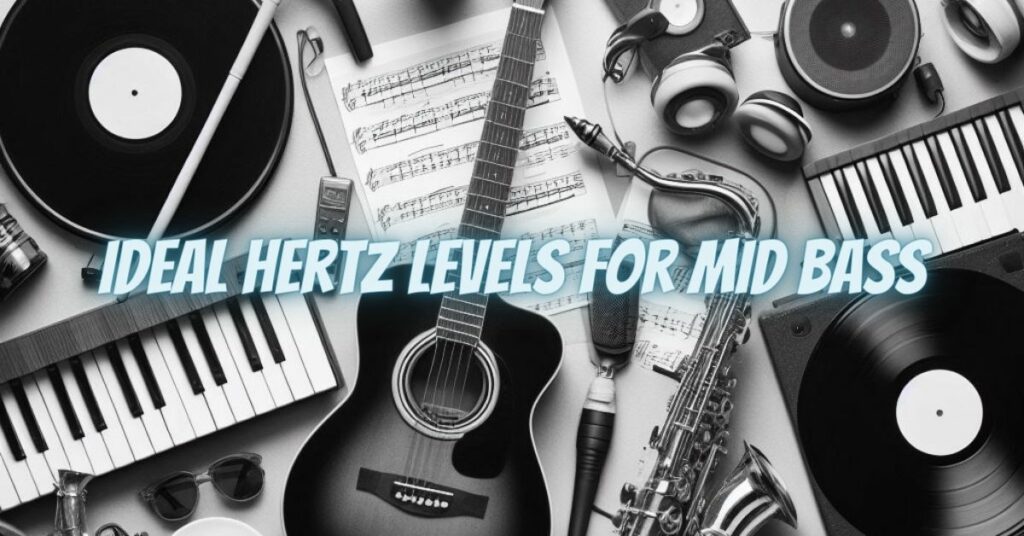Mid-bass frequencies play a crucial role in shaping the character and impact of music and audio. However, there’s often confusion about the specific hertz (Hz) range that constitutes “mid-bass” and what frequencies are ideal for achieving the best mid-bass performance. In this article, we’ll explore the concept of mid-bass, the ideal frequency range, and how to optimize your audio system to make the most of this vital sonic component.
Understanding Mid-Bass
Mid-bass refers to the frequencies that bridge the gap between the lower midrange and the upper bass. It’s a critical range where many musical instruments, including drums, bass guitar, and lower-pitched vocals, produce their fundamental tones. Effective mid-bass reproduction is essential for creating a well-rounded and dynamic audio experience.
The Ideal Frequency Range for Mid-Bass
The specific Hz range for mid-bass can vary slightly depending on the context and personal preferences. However, a common guideline for the mid-bass range is approximately 80Hz to 250Hz. This range captures the fundamental frequencies of many instruments and the warmth and punch that adds character to the music.
- 80Hz – 120Hz: The lower end of the mid-bass range encompasses the fundamental frequencies of most bass instruments, such as the kick drum and bass guitar. Boosting frequencies in this range can provide depth and impact to your audio.
- 120Hz – 250Hz: The upper mid-bass range is where you’ll find the warmth and body of many instruments and vocals. Enhancing these frequencies can result in a fuller and more dynamic sound.
Optimizing Mid-Bass Performance:
To optimize mid-bass performance in your audio system, consider the following steps:
- Speaker and Subwoofer Selection: Ensure that your speakers and subwoofers are capable of reproducing mid-bass frequencies effectively. Look for models with a balanced frequency response that extends into the mid-bass range.
- Room Acoustics: Room acoustics play a significant role in mid-bass performance. Experiment with room treatments and speaker placement to mitigate issues like standing waves or room resonances that can affect mid-bass clarity.
- Equalization (EQ): Use an equalizer to fine-tune mid-bass frequencies. Boost or cut frequencies in the 80Hz to 250Hz range to achieve the desired balance and impact. Be cautious not to overdo it, as excessive EQ can lead to distortion.
- Crossover Settings: If you have a subwoofer, configure its crossover settings to ensure a seamless transition between the main speakers and the subwoofer in the mid-bass range. This helps maintain a balanced sound.
- Speaker Placement: Experiment with speaker placement to optimize mid-bass response. Placing speakers too close to walls or corners can result in bass buildup, while positioning them in the room’s center may lead to more balanced mid-bass.
- Room Calibration Systems: Some audio systems come with room calibration tools that can automatically adjust mid-bass and other frequencies based on your room’s acoustics. These systems use microphones to measure room characteristics and adjust audio accordingly.
- Listening Preferences: Ultimately, your listening preferences should guide your mid-bass adjustments. Fine-tune the mid-bass range to achieve the sound that best suits your musical tastes and the content you enjoy.
The mid-bass range, typically spanning from 80Hz to 250Hz, is crucial for shaping the impact and warmth of music and audio. Optimizing mid-bass performance involves selecting suitable speakers and subwoofers, considering room acoustics, using EQ, and experimenting with placement. The ideal Hz for mid-bass is ultimately determined by the context of your audio system and your personal listening preferences. By paying attention to this often-overlooked frequency range, you can achieve a more engaging and dynamic audio experience.

